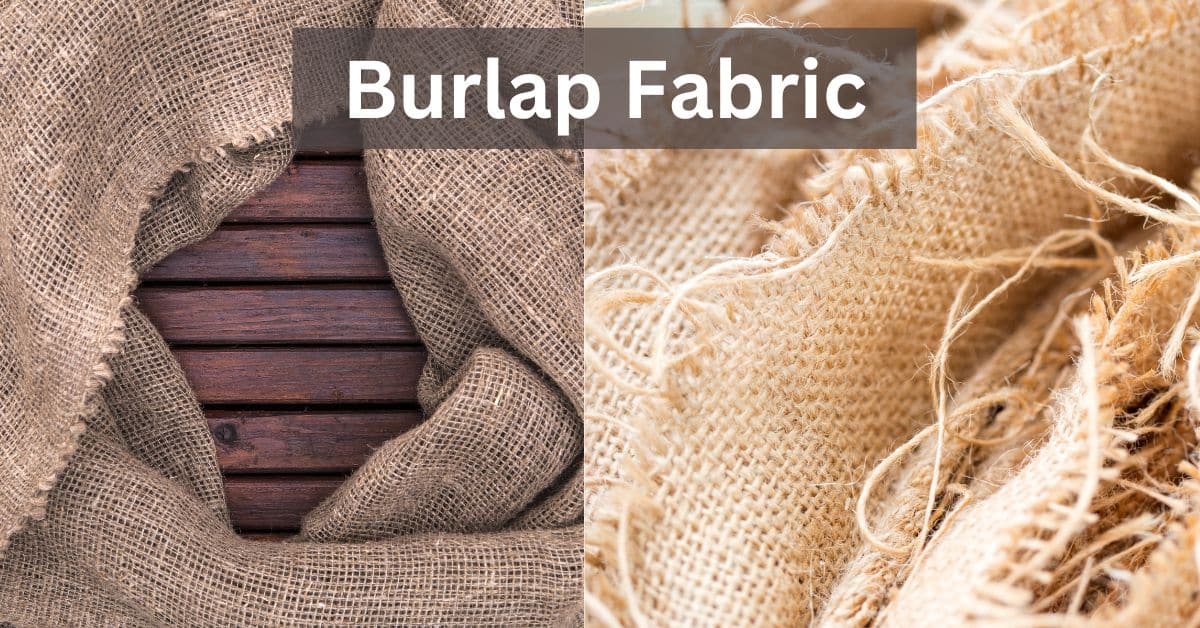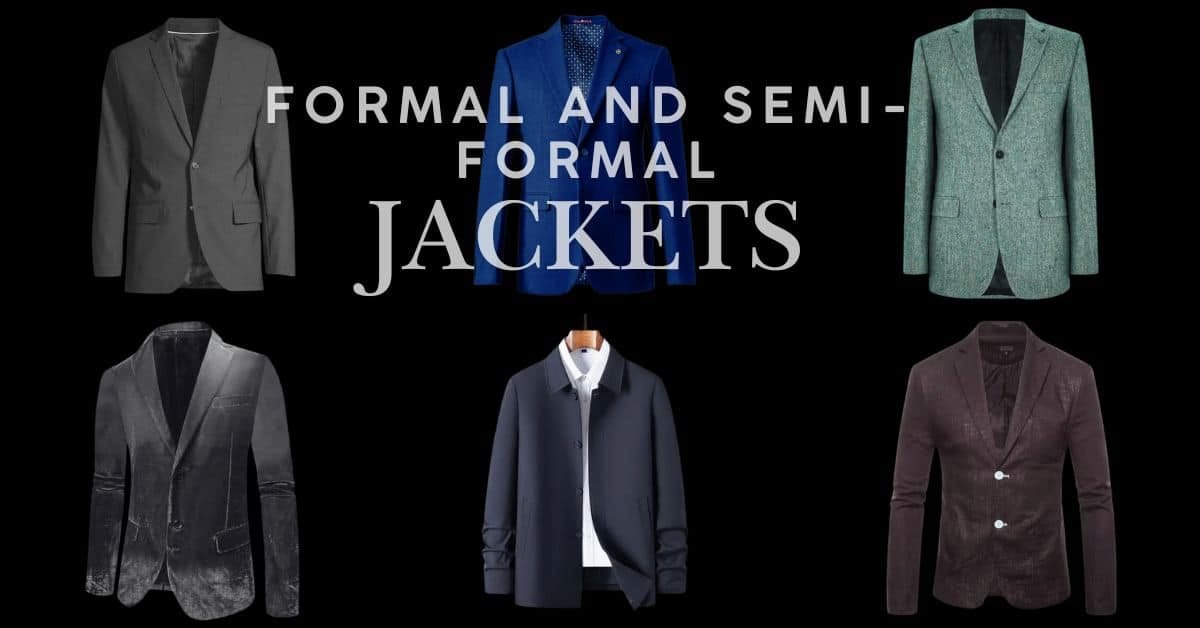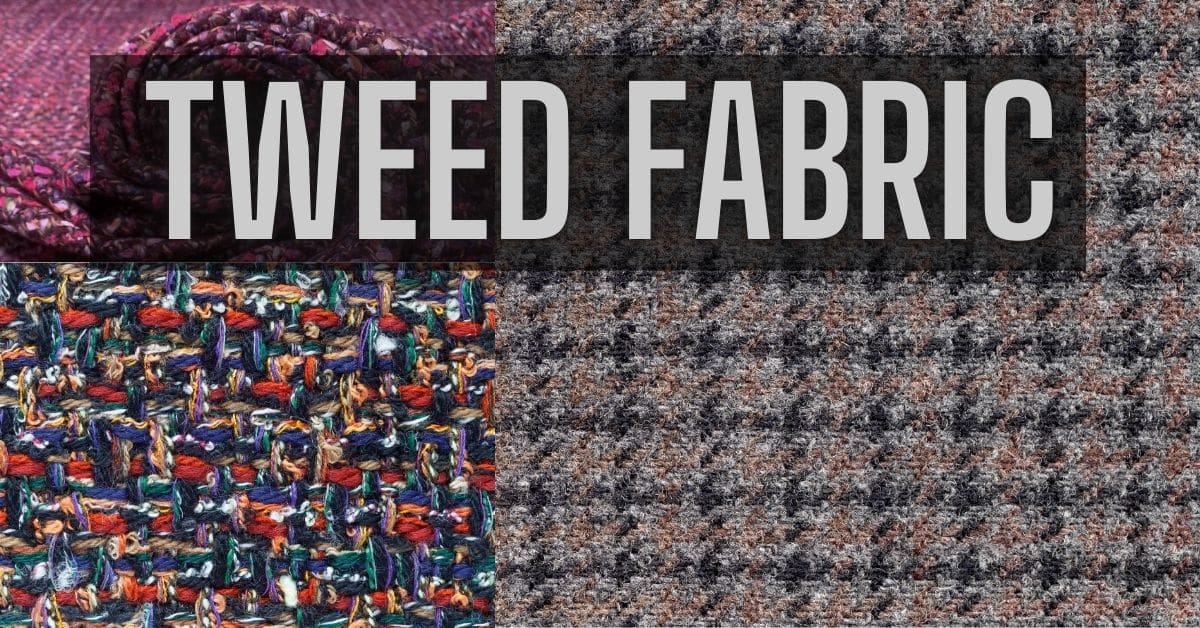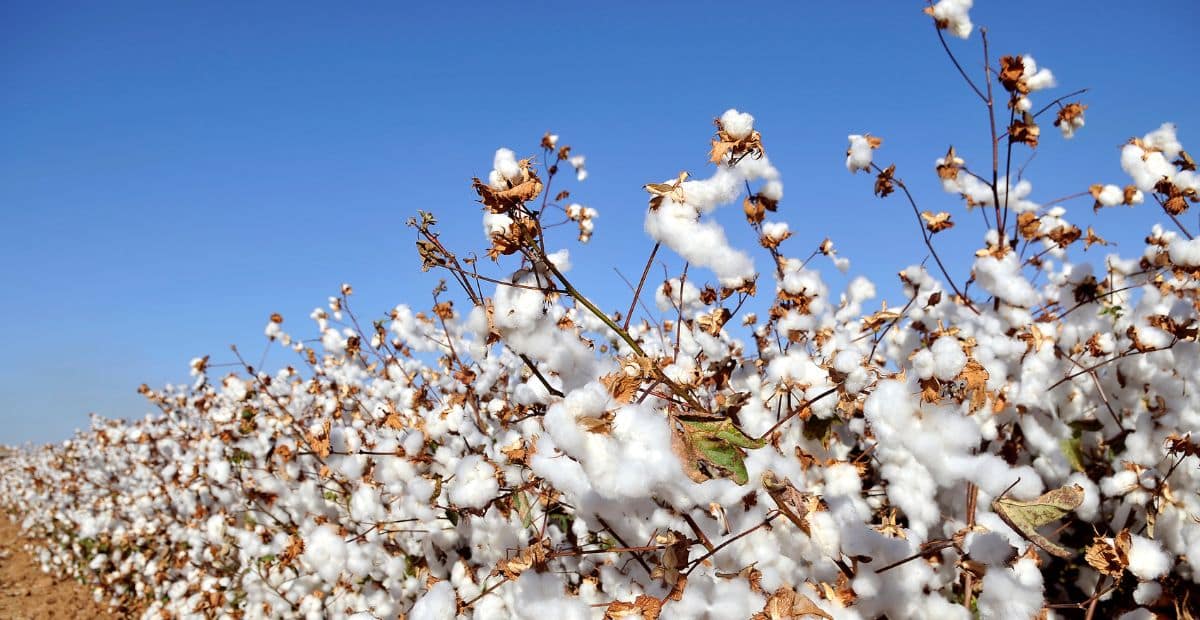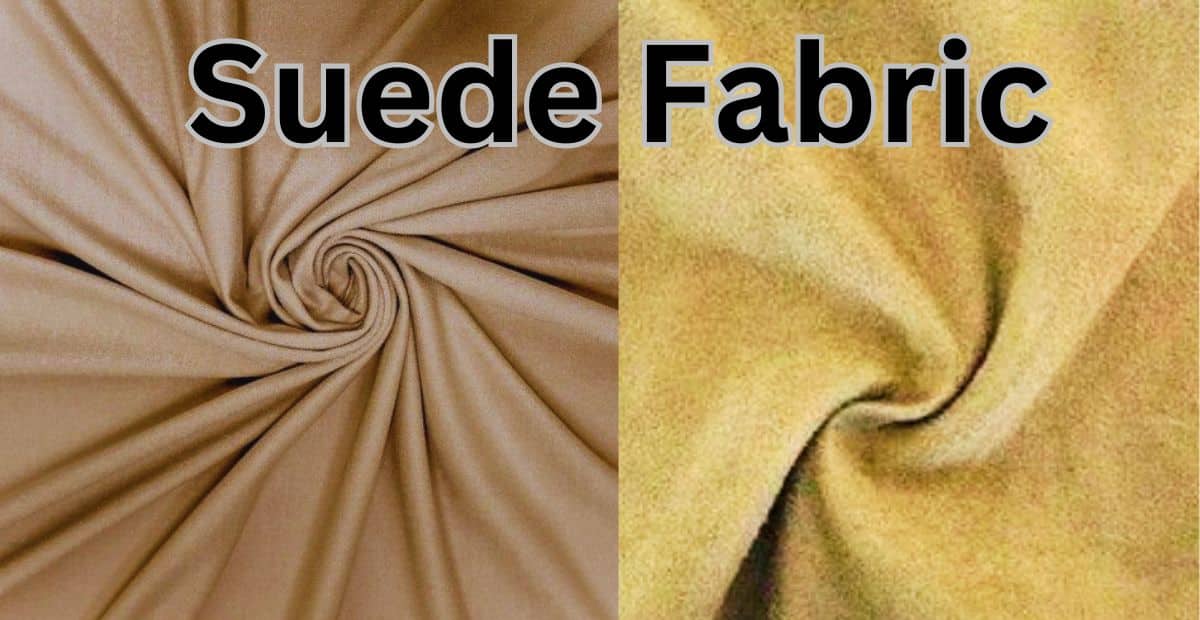Brocade has stood for class and beauty for centuries. Kings, priests and haute couture fashion designers preferred this fabric for its intricate design. Brocade displays more than a decoration; it is a demonstration of exceptional craftsmanship. Here, in this article, we will explore what brocade cloth is, what it is used for, and how it is made, as well as why it is still among the most used fabrics in the world today.

What is Brocade Fabric?
Brocades have intricate raised designs sewn directly into the cloth, typically through metallic threads. These designs often incorporate flowers, geometrical figures or historical themes, giving the cloth a 3-dimensional look. Although abrasive workers first produced brocade in silk, contemporary varieties contain artificial fibres such as polyester, rayon or mixed fabrics. The word “brocade” originates from *broccato*, the Italian for “embossed cloth,” and is best known for its raised, angled weaves. As opposed to printed or embroidered textiles, brocade weaves its design directly into the fabric. .
Properties of Brocade Fabric
The brocade cloth is known for its opulence, beautiful patterns and texture. Its distinguishing properties distinguished it from other fabrics, making it a popular fabric for haute couture, interior décor and ritual garments. Here are the essential properties of brocade fabric:
1. Ornate and Decorative Appearance
Brocade is best known for its high, curving designs sewn into the fabric. These patterns are often floral, geometric, or historical in nature, and they make the fabric look very luxuriant. We often attach it with metallic thread, in the form of gold or silver to make it more decorative, to create an embossed, glittery appearance.Brocade is best known for its high, curving designs sewn into the fabric. These patterns are often floral, geometric, or historical in nature, and they make the fabric look very luxuriant. We often attach it with metallic thread, in the form of gold or silver to make it more decorative, to create an embossed, glittery appearance.
2. Heavyweight and Structured
Brocade is typically a thick fabric with an overly structured feel. It is also very durable in shape which makes it suitable for fabrics and furnishings which need a defined form, like jackets, suits, and upholstery.
3. Durable and Long-Lasting
Though delicate in appearance, brocade is extremely durable thanks to its tightly knit fabric and sturdy fibers. It resists fading, making it ideal for garments and decor items that need durability.
4. Smooth and Textured Surfaces
Brocade provides a blend of polished and distressed surfaces. The inner fabric is usually smooth, and the embossed designs add an organic feel. This contrast adds visual and tactile appeal to the fabric.
5. Luxurious Sheen
Silk and metallic brocade particularly have an organic shine which makes the material feel luxuriant. Its shiny finish has been a staple of suits and interior design.
6. Low Breathability
Because of its dense structure and heavy weight, brocade is not breathable. This makes it better suited to cooler environments or situations where ventilation isn’t as critical. It’s warm and warm, perfect for evening and winter wear.
7. Minimal Stretch
Brocade is a fabric with almost no stretch. It is stiff and dense, enhancing its durability but restricting its stretch. Therefore, brocade garments are normally not loose or slubby in feel but tightly woven.
8. Versatility in Fiber Composition
Whereas ancient brocade was made from pure silk, modern brocade can be woven from different fibres, each of which has unique characteristics:
Silk Brocade: Rich, smooth, and sophisticated.
Polyester Brocade: Heavy, cost-effective, and durable.
Rayon Brocade: Lightweight, smooth, and affordable.
Blended Brocade: Mixes various fibres to create a durable, supple and cost-effective look.

Manufacturing Process of Brocade Fabric
The manufacture of brocade cloth is a complex affair that involves the latest weaving technologies and workmanship. Here’s a guide to brocade manufacturing:
1. Fiber Selection
It all starts with fiber choice. Silk used to be the most commonly used fabric for brocade, but nowadays it can be produced from:
Silk: Provides a luxurious feel and sheen.
Polyester: Offers durability and affordability.
Rayon: Copy the softness and sheen of silk at less cost.
Blends: Mixes fibres to create particular attributes (durability or softness).
2. Yarn Preparation
After the fibers are picked, they are spun into yarns. Gold or silver metallic threads could be braided into the yarns to add the classic brocade shimmer.
3. Weaving
Brocade is stitched on a jacquard loom, making it possible to weave complicated designs. The weaving process involves:
Base Fabric: The base fabric is generally plain and acts as the foundation for the designs.
Pattern Weave: Other yarns are sewn into the fabric base to form the elevated, decorative ornaments. These yarns can even have metallic yarns in them to give them shine.
4. Finishing
Upon completion of the weaving process, the fabric is given finishing procedures to finish it and make it look good and feel nice.
Scouring: Washes the fabric for contaminants.
Dyeing: Adds vibrant colors to the fabric by hand or using pre-dyed yarns.
Pressing: Flattens the fabric and lusters it, leaving a glossy finish.
5. Quality Control
At last, the brocade fabric is checked for imperfections or flaws. Only the best pieces are permitted for dress, decoration or ritual purposes.

Uses of Brocade Fabric
Brocade fabrics can be applied for a number of purposes, because of its elegance and strength. The most prevalent uses are:
1. Fashion and Apparel
Evening Gowns and Dress Clothes: With its luxurious appearance, brocade is an all-time favorite fabric for evening wear, wedding dresses and dress clothes.
Jackets and Coats: Because of its strength and ornamentation, Brocade is a great choice for outerwear and lends a refined look to any ensemble.
Accessory: Brocade is also employed in making handbags, clutches and shoes, giving fashion accessories an elegant look.
2. Interior Design
Upholstery: Brocade is a popular fabric for furniture upholstery, especially in formal or grandiose environments.
Curtains and Drapes: Because of its weight and density, brocade is a good option for curtains to add a luxurious look to any room.
Cushions and Throws: Brocade decorative cushions and throws bring class into the living room.
3. Ceremonial and Religious Garments
Brocade is used to make ritual clothing – robes for the clergy, or elaborate garments for weddings and other ceremonies.
4. Costumes and Theatrical Use
Given its elaborate appearance, brocade is commonly found in theatrical, film and historical costumes.

Fabric Care Brocade Care and Maintenance
Brocade fabric, though resilient, requires particular attention to preserve its beauty and durability. Below are some brocade care instructions:
1. Dry Cleaning Recommended
Because of its fragile weaving and fiber content, brocade needs to be cleaned by an experienced dry cleaner to ensure it is not damaged.
2. Avoid Excessive Moisture
Brocade is water resistant, but can cause issues if the threads are metallic. Don’t leave it wet or rinse it in water.
3. Store Properly
When storing brocade fabrics or clothing, hang them out to dry and stay cool or roll them up on neutral acid tissue paper to avoid folding and shrinkage.
4. Iron with Care
If ironing, use a low temperature setting and hold the iron and fabric against a pressing cloth so as not to burn or flatten the surface.
Types of Brocade Fabric
The luxurious quality, intricate designs, and history of brocade fabrics. Yet all brocade cloths are not the same. Brocades of various types differ in the fabrics, weaving methods and patterns they feature, which lend themselves to particular uses. The list below will give you an insight into the various varieties of brocade fabrics.
1. Silk Brocade
Silk brocade is the most traditional and luxurious kind of brocade. Traditionally, it was a popular treat for kings and noblemen as it was costly and luxurious in texture.
Characteristics:
Made from pure silk threads.
Soft, smooth, and highly lustrous.
Sometimes intricately decorated in gold or silver thread.
Uses:
Bridal wear and evening gowns.
High-end upholstery and drapery.
Religious and ceremonial garments.

2. Cotton Brocade
Cotton brocade is cheaper and breathable than silk brocade. Often, it is used for more informal or domestic uses, but without losing the aesthetic value of traditional brocade.Characteristics:
100% cotton or a cotton blend.
Smooth matte texture.
Not as gleaming as silk brocade, but much stronger.
Uses:
Casual clothing and accessories.
Pillows and curtains for your house.
Decorative tablecloths and runners.
Advantages:
More affordable than silk brocade.
Breathable and comfortable.
Simpler to look after and maintain.

3. Synthetic Brocade
Synthetic brocade uses artificial fibers such as polyester, nylon or rayon. It is a favorite for those who desire the brocade feel at a reduced price.
Characteristics:
Synthetic fibres or blends.
Super-glossy and vivid-coloured.
Not as breathable, but wrinkle resistant as natural fibre brocade.
Uses:
Bags and shoes — Fashion accessories.
Upholstery and decorative textiles.
Costumes for theater and events.
Advantages:
Affordable and widely available.

4. Zari Brocade
Zari brocade is a fine-grained brocade with metallic threads, either in gold, silver or copper. It is extremely decorative and used extensively in Indian and Middle Eastern costumes.
Characteristics:
Incorporates metallic fibers into the fabric.
Shiny and reflective surface.
Usually woven with floral or geometric designs.
Uses:
Bridal sarees, lehengas, and dupattas.
Festive and ceremonial wear.
Wall hangings and pillows.

5. Jacquard Brocade
Jacquard brocade is named after the Jacquard loom, which weaves patterns in fine detail without the use of embroidery or printing.
Characteristics:
Woven on a Jacquard loom.
High-textured complex patterns.
Fabricated from silk, cotton, or polyamide.
Uses:
Jackets, skirts, dresses are fashionable clothes.
Furniture and household upholstery.
High-tech curtains and valances.

6. Embossed Brocade
Embossed brocade designs are raised or “embossed” on the surface of the fabric to simulate three-dimensional shapes.
Characteristics:
Patterns that rise to make the surface rough.
Can be manufactured from fibres such as silk and synthetics.
Sometimes floral, paisley or abstract designs.
Uses:
Evening gowns and formal wear.
Decorative cushions and bedspreads.
Clutches and belts for women.
Advantages:
Unique textured appearance.
Adds texture and interest to clothes and home décor.
Versatile in design options.

7. Damask Brocade
While the two are essentially interchangeable, damask brocade is an alternative form of brocade that is reversible. In contrast to regular brocade, which tends to be unidirectional, damask brocade can print the pattern on both sides of the fabric.
Characteristics:
A reverseable shape with a flat and smooth finish.
Silk or cotton or synthetic fibers.
Features elaborate and symmetrical patterns.
Uses:
Table linens and bedspreads.
Curtains and draperies.
Proffessional shirts and trousers.
Advantages:
Reversible and versatile.

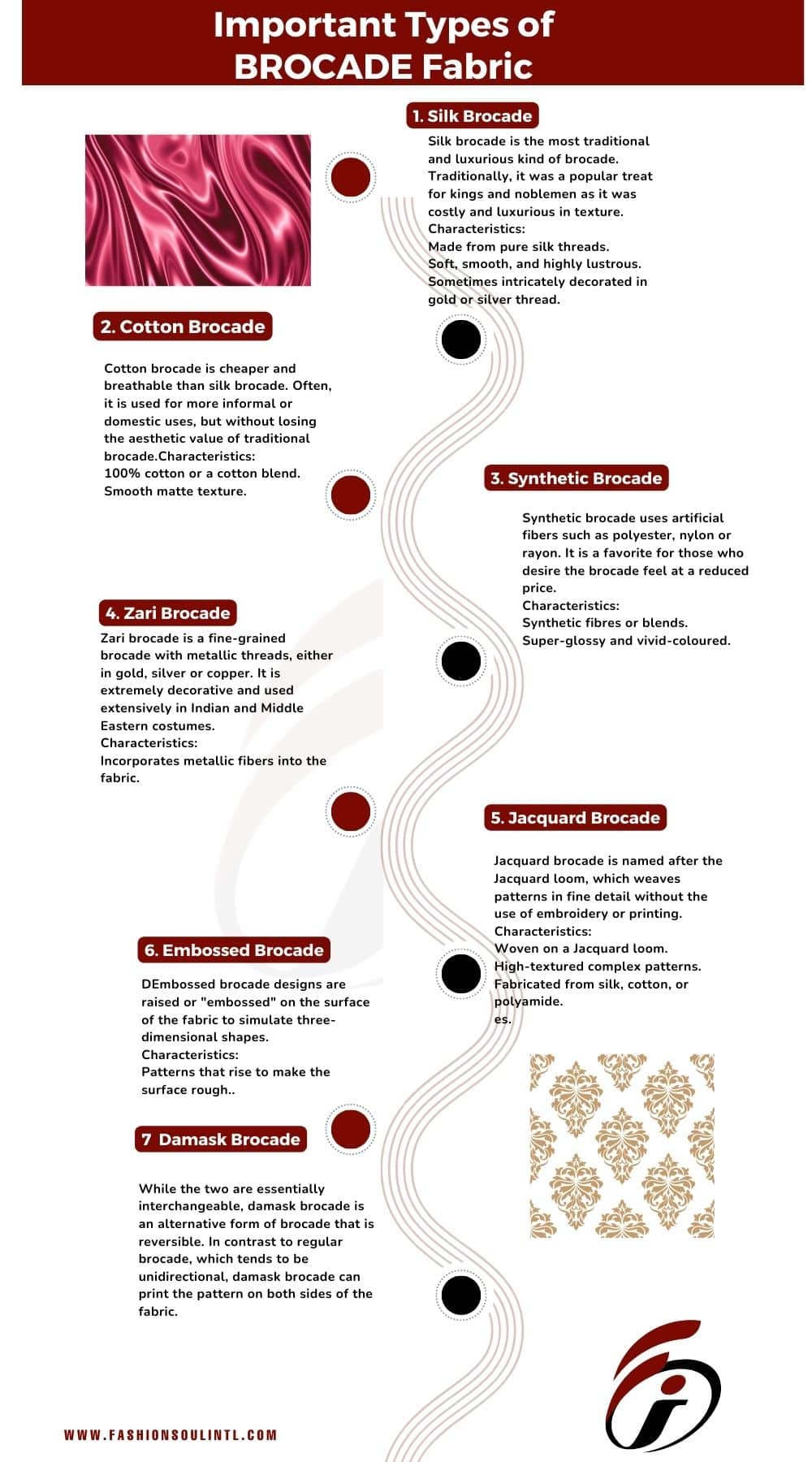
FAQS:
What is the substance of brocade?
The fibers used in brocade are silk, polyester, cotton, and metal thread.
Is brocade appropriate for casual use?
Since it is bulky and patterned, brocade is best left for formal events, rather than everyday use.
Can brocade be machine-washed?
Brocade is best cleaned by dry cleaning, as it retains its pattern and lustre.
Conclusion:
The brocade fabric remains a timeless expression of style and quality. The complex patterns, textures, and adaptability make it a staple for fashionistas and interior decorators. Whether in a beautiful evening gown, or an exquisite piece of furniture, or an eccentric accessory, brocade brings a touch of luxury and sophistication to any situation. If you keep it clean, then this beautiful fabric can be used as a part of your wardrobe or your interior décor for a lifetime.



